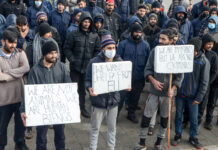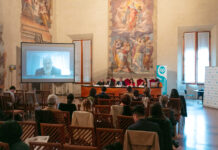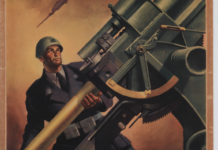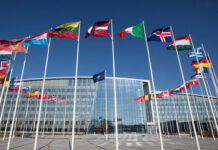The definition that best identifies Mexico and Central America historically is “the United States’ backyard”. Indeed, since the beginning of the 19th century, while inheriting the Spanish conquerors’ colonial model intact, the US applied President Monroe’s doctrine of “America for the Americans”. These are the lands where the world’s first multinationals were created, the so-called bananeras (hence the term “banana republics” referring to the small nations along the isthmus). These lands were invaded several times by the marines, starting with the giant, Mexico, which was robbed of half its territory. Not by chance, it is precisely Mexico that in 1910 would experience the first revolution after the French one (and before the Bolshevik one), based on the old unresolved problem of Latin America as a whole: an agrarian reform to overcome the paradigm of large landowners versus peones.
The entire region is currently going through one of its most critical moments due to serious social inequality, rising poverty, uncontainable crime and corruption, and climate change with increasingly frequent hurricanes and droughts. And finally, the coup de grace: the pandemic. Drug trafficking has turned countries such as Guatemala and Honduras into quasi narco-states (run by Mexican cartels), with their institutions shattered. In Tegucigalpa, where elections will be held in November, President Juan Orlando Hernandez has even been directly accused of cocaine trafficking. Guatemalan President Alejandro Giammattei and his predecessor Jimmy Morales suppressed the last bastion of the functioning judicial system: the UN International Commission against Impunity, created in 1996 after the end of the conflict between the army and the guerrillas.
In this context, the indicators of violence throughout the area have soared relentlessly. According to the latest report on the 50 cities with the most murders worldwide, 18 are Mexican. Of these, six are on top of the list, with 90/110 homicides per hundred thousand inhabitants. The list also includes the two main cities of Honduras, while San Salvador and Guatemala City have just dropped out by a hair.
How can the long-standing and unstoppable emigration from Central America and Mexico to the United States be explained? At first it was rather piecemeal and then organised in caravans to limit abuse and extortion by human traffickers. Donald Trump, with his “wall”, had managed to stem this exodus, convincing the Mexican authorities and the leaders of the countries of the Northern Triangle (Guatemala, Honduras and El Salvador) to stop the desperate people at the Guatemalan border. Young Nicaraguans instead prefer peaceful Costa Rica as a refuge to escape Daniel Ortega’s repressive regime. Further south, no one is leaving Panama (home of laundering for narcos), even though the doubling of the inter-oceanic canal has not brought the long hoped-for benefits due to the drop in international maritime transport. Before Trump, President Barack Obama inaugurated a policy of substantial aid to Central America to curb immigration; but then he was the one who ordered the most deportations of “illegals” from the US. It is now Joe Biden’s turn to look for a solution to save his own “backyard”.
Nicaragua
In Nicaragua, the elections of November 2021 had a rather predictable outcome. President Daniel Ortega and his deputy (and wife) Rosario Murillo have prepared every detail for their confirmation: a tailor-made electoral law, the renewal of the Supreme Court of Justice and the Supreme Electoral Tribunal, the banning of certain troublesome parties, the recognition of the ambiguous figure of Arturo Cruz as the only de facto contender (who has prevented the unification of the opposition), and finally, an indictment for alleged money laundering of their real antagonist, Cristiana Chamorro, daughter of former president Violeta de Chamorro, who beat then commander Ortega in the 1990 elections.
That traumatic electoral debacle actually proved to be the masterpiece of democracy of the Sandinista Revolution which, defeated by the secret of the ballot box, passed the buck with the Frente Sandinista’s intention to make up for it in the following elections. But its leader Daniel Ortega, marginalising all internal dissent within the party and with a pact of exclusive mutual legitimisation with sectors of the extreme right, designed a messianic strategy to return to power at any cost. He returned to the presidency in 2007 as a neo-liberal. He betrayed his own social base to add his family clan to the historical oligarchic group linked to the former dictator Somoza, guaranteeing tax exemptions, social peace and the lowest minimum wages in the region. At the same time, he obtained the non-belligerence of the United States by ratifying the Free Trade Agreement and then agreeing to bow to the International Monetary Fund’s demands. Nothing could be further from the Bolivarian anti-imperialist flag that Ortega opportunistically waved to benefit from the aid of Venezuela’s Chavismo.
It was in this climate that the surprising and spontaneous April 2018 popular uprising led by university students (the “grandchildren” of the General de hombres libres Augusto C. Sandino) broke out. It was smothered in blood, arrests and resulted in tens of thousands of Nicaraguans’ exodus to Costa Rica while the regime peddled the gigantic fake news of the attempted coup from Washington. Since then, Nicaragua has turned into a ferocious police state, with an economy on its knees that the presidential couple even tried to save by denying for a long time the contagion of Covid-19. What little remains of press freedom continues to suffer violent attacks. A tragedy unfolds with the silence of the international community for a forgotten country that paradoxically today can only rely on the United States under Biden for an encouraging future.
El Salvador
In El Salvador (the “Tom Thumb” of the Americas), the era of Nayib Bukele, the youngest President of the Latin American subcontinent, has begun. Elected in the first round in 2019, he now also enjoys a two-thirds majority in the Legislative Assembly. By tweeting, he has won over the younger, poor generations who have an uncertain future, resetting the two-party system that had held sway since the end of the bloody civil war, when the 1992 peace accords inaugurated a political-institutional coexistence pact between Arena’s historic oligarchy and the former guerrilla Frente Farabundo Martì (FMLN). After fifteen years of right-wing government, the country has been ruled by the Front for the last two terms. The Front, in the minority in parliament, has been constantly boycotted by the Arena party in its attempts to address the country’s structural inequalities. Bukele, an entrepreneur of distant Palestinian origin, swept everyone away within a couple of years, reducing the Right to 12% and the FMLM to 6.8%. Paradoxically, the first millennial Head of State on the planet came from the ranks of the left, whose leaders (following outdated practices) clumsily decided to expel him for “intemperance” while he was no less than the mayor of the capital San Salvador.
The problem is that from the outset Nayib Bukele has showed marked authoritarian tendencies, which is precisely what partly allowed him to grow in popularity. Now he claims to rule alone. From executive power and having gained control of the legislature with his Nuevas Ideas party, he immediately ordered the removal of the Supreme Court of Justice and replaced it with one he liked. He is also in the process of promoting an amendment to the Constitution that will allow him to run again in 2024. He has the army and the police on his side, which he mobilised in February 2020 by occupying the previous parliament, which had vetoed his decrees on the pandemic.
Will Bukele be able to meet the expectations he has generated in reducing poverty and corruption and in fighting the maras (youth gangs) which make El Salvador one of the most violent countries in Latin America? Will this be possible without the help of the Biden administration, which criticises his anti-democratic attitude and his increasing relations with Beijing?


















